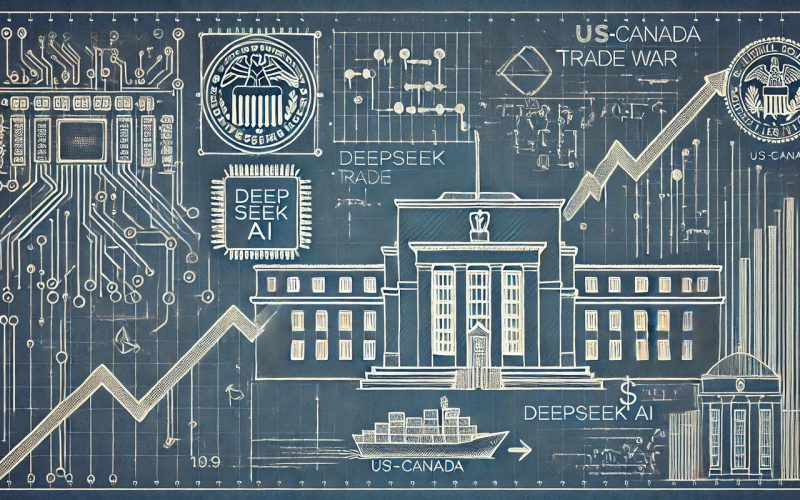by Brian S. Wesbury – Chief Economist & Robert Stein, CFA – Deputy Chief Economist, First Trust Portolios
Over the past twenty years, in spite of incredible new technologies, US real GDP growth has averaged just 2.0% at an annual rate. By contrast, in the twenty years prior to the most recent twenty – from the mid-1980s thru the mid-2000s – real GDP grew at a 3.2% annual rate. Some slower growth is due to the aging and retirement of Boomers, but in our view, the real culprit is the expansion in the size of government.
Government spending surged in 2008 and during COVID. At the same time the Federal Reserve held interest rates extremely low, M2 growth surged, immigration accelerated, and environmental regulation altered economic activity. Economists in government and academia promised us this would boost growth and jobs, instead growth slowed.
But now policies are changing. The Big Beautiful Bill avoided a tax hike in 2026 (and made current tax rates permanent), tariffs are heading higher, immigration has slowed significantly, and regulations are being reduced. In the first half of this year, the economy grew at a 1.4% annual rate. The Atlanta Fed GDP Now model currently projects a 3.0% growth rate in the third quarter. If that forecast turns out to be accurate, the annualized growth rate for the first three quarters of this year would be 1.9%, in-line with the modest long-term 2.0% trend.
At the same time, Artificial Intelligence is taking off and even though estimates about how AI will impact productivity and growth are all over the map they all say it’s positive.
So, with all these cross currents, uncertainty is substantial and to say the economic data have been “quirky” lately would be an understatement. Nonfarm payrolls were up only 22,000 in August and are up only 70,000 per month in the past seven months versus growth of 146,000 per month in the same seven months in 2024. Trade patterns are extremely volatile, with real GDP down in Q1, but up in Q2 and Q3.
A sharp drop in immigration is likely a key factor behind slower job growth. Meanwhile, government payrolls are down 97,000 in the past seven months, the biggest (non-Census related) seven-month drop in at least 35 years. We view this a positive for long-term private sector growth, but also a drag on jobs in the short-term.
But even as job growth has slowed, much of the economy has been holding up quite well. Through July, retail sales are up 4.1% versus the same period in 2024; sales of cars and light trucks have averaged a 16.3 million annual rate so far this year, versus a 15.5 million rate in the first eight months of 2024. Manufacturing output in the first seven months of this year is up 0.8% versus the same seven months in 2024. That might not sound like much, but factory production is below where it was ten years ago, so any growth in this sector is good news.
Is some of this increase in manufacturing due to reshoring because of tariffs? After all, that’s what tariffs are supposed to do. But the stop-start nature of some of the tariffs, as well as uncertainty regarding whether the courts will eventually strike down the tariffs is likely an obstacle for many firms to build out this production in the US. It’s tough to make large, long-term commitments with so much uncertainty.
The case now nearing the Supreme Court is a prime example, with the Kalshi prediction market tilting toward a Trump Administration loss. This all has to do with questions about whether Congress has delegated authority over tariffs to the executive, or whether trade deficits, fentanyl and border security are “emergencies” which the executive must address.
But even if SCOTUS strikes down the tariffs by early next year, that’s not the last word. President Trump would likely use other laws already on the books to try to impose tariffs, or could seek legislation to raise tariffs, possibly through budget reconciliation, which would require only a simple majority in the Senate. In other words, uncertainty remains on this issue.
That leaves AI…clearly it changes things. Is it like the railroad or cellphone which accelerated travel, communication and trade? Or does it cannibalize activity in areas like search or coding? Growth in certain tech jobs has already leveled off. We are not Luddites and don’t expect mass unemployment from AI; but some will gain while others lose. In the near term we do not see an economic boom from AI similar to what happened in the 1990s in the first internet boom. Then, economic growth picked up quickly; so far, with AI, we are still waiting. And whether growth picks up in the future is still dependent on whether or not Congress and the President can get spending under control.
Brian S. Wesbury – Chief Economist
Robert Stein, CFA – Deputy Chief Economist
Click here for a PDF version
Copyright © First Trust Portolios













